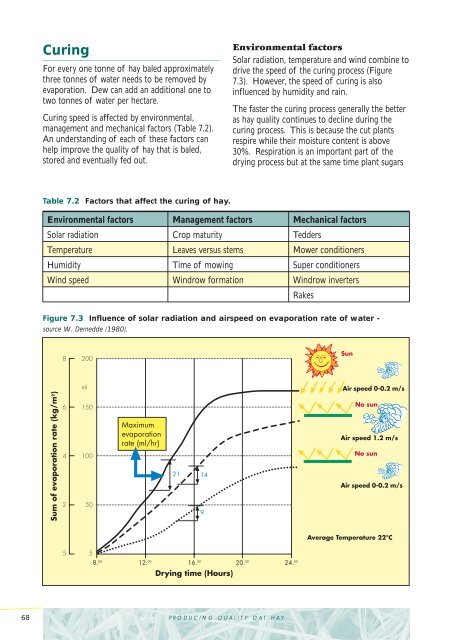Create successful ePaper yourself
Turn your PDF publications into a flip-book with our unique Google optimized e-Paper software.
Curing<br />
For every one tonne of hay baled approximately<br />
three tonnes of water needs to be removed by<br />
evaporation. Dew can add an additional one to<br />
two tonnes of water per hectare.<br />
Curing speed is affected by environmental,<br />
management and mechanical factors (Table 7.2).<br />
An understanding of each of these factors can<br />
help improve the quality of hay that is baled,<br />
stored and eventually fed out.<br />
Table 7.2 Factors that affect the curing of hay.<br />
68 PRODUCING QUALITY OAT HAY<br />
Environmental factors<br />
Solar radiation, temperature and wind combine to<br />
drive the speed of the curing process (Figure<br />
7.3). However, the speed of curing is also<br />
influenced by humidity and rain.<br />
The faster the curing process generally the better<br />
as hay quality continues to decline during the<br />
curing process. This is because the cut plants<br />
respire while their moisture content is above<br />
30%. Respiration is an important part of the<br />
drying process but at the same time plant sugars<br />
Environmental factors Management factors Mechanical factors<br />
Solar radiation Crop maturity Tedders<br />
Temperature Leaves versus stems Mower conditioners<br />
Humidity Time of mowing Super conditioners<br />
Wind speed Windrow formation Windrow inverters<br />
Rakes<br />
Figure 7.3 Influence of solar radiation and airspeed on evaporation rate of water -<br />
source W. Dernedde (1980).

















